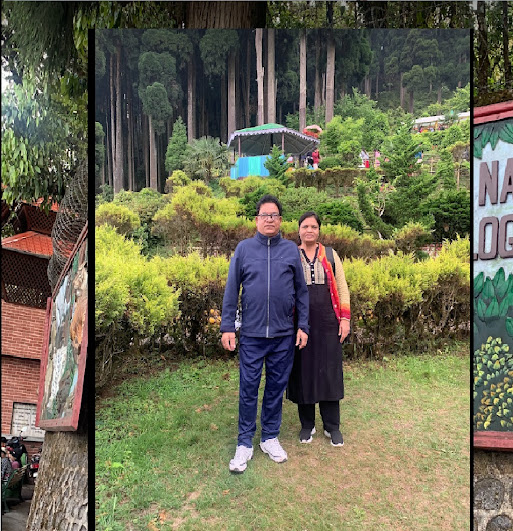Tour to Sikkim, Gangtok and Darjeeling
Tour was of 6 nights and 7 days.
1. Nathula Pass · 2. MG Marg · 3. Baba Harbhajan Singh Memorial Temple · 4. Hanuman Tok · 5. Ranka Monastery · 6. Himalayan Zoological Park · 7. Banjhakri Water Falls.
For more than three centuries, Sikkim was a separate Buddhist state under the Namgyal dynasty. In the 19th century, it became a protectorate of British India, and after 1947, it became a protectorate of India. In 1975, it formally joined India after a referendum, becoming the 22nd state to join the Indian Union. The Namgyal dynasty was in power when the Kingdom of Sikkim was founded in the seventeenth century.
Once a tiny village, Gangtok is today the capital of Sikkim. As the capital of the Kingdom of Sikkim in the 19th century, it rose to prominence. The Namgyal dynasty, which came to power in the area in 1716, is entwined with the history of the city. The important location of Gangtok on the trade route between Tibet and British India, particularly after the British vanquished the Tibetans, further contributed to the city's growth. Sikkim became a nation-state with Gangtok as its capital when India gained its independence.
The
history of Darjeeling is entwined with that of Nepal, Sikkim, and the British
East India Company. Before being purchased by the British in 1835, it was
briefly ruled by Nepal after having been a part of Sikkim. Darjeeling's
geography and culture were greatly influenced by the British, who turned it
into a sanatorium and a tea-growing region. The Lepcha people lived in
Darjeeling while it was a part of the Kingdom of Sikkim.
1) Bagdogra Gangtok (2N) Tsomgo
Lake Gangtok (1N) Namchi
Darjeeling
We arrive at Bagdogra Airport as per their Scheduled flight. Proceed
from the airport to Gangtok in Car arranged by the tourist. It took Six hours to reach Hotel at Bagdogra.
On 2nd day, we had a plan to explore the Gangtok city. we visited Ranka Monastery, Banjhakri waterfall, we enjoy a Rope Way Ride which gives us a splendid view of Gangtok city, Namgyal Institute of Tibetology and Dordul Chorten Stupa. Later we visited the Flower exhibition centre, Hanuman Tok, Ganesh Tok and Tashi View Point to capture amazing views of Himalayan ranges.
On 3rd day, Gangtok – Tsomgo Lake – Gangtok :
We visited Baba Harbhajan Singh Mandir – a holy shrine honouring Indian army soldier, folk hero and saint Baba Harbhajan Singh. Later we visit Tsomgo Lake – a high altitude scenic lake considered to be sacred by the Sikkimese. In the evening, we have some free time to explore the nightlife and casinos of Gangtok on our own. Note: Foreigners and NRI's are restricted to visit Baba Harbhajan Singh Mandir as per Government regulations.
On 4th Day, Gangtok – Namchi – Darjeeling .
We proceed to Namchi to visit the Chardham Temple – also known as Siddheshwar Dham where we can witness one of the tallest statue of Lord Shiva and Samdruptse Monastery to view the statue of Guru Padmasambhava with a height of 135ft.
On 5th Day 5 Darjeeling, we proceeded to the Tista River for the enjoyment white water rafting.
Teesta River is a tributary of the Brahmaputra river that originates from the eastern Himalayas near Chunthang, Sikkim and flows to a whopping distance of 315 km. Teesta river is one of the most famous river rafting spots adorned with blossom green surroundings. Activity Duration: 1-2 hours and Rafting Distance: 5 km & 7 km. The long stretch of Teesta River is excellent for rafting for beginners as well as seasoned rafters. The river has more whirling waters that offers a challenge. It is very challenging and breath taking experiences we had while rafting.















No comments:
Post a Comment